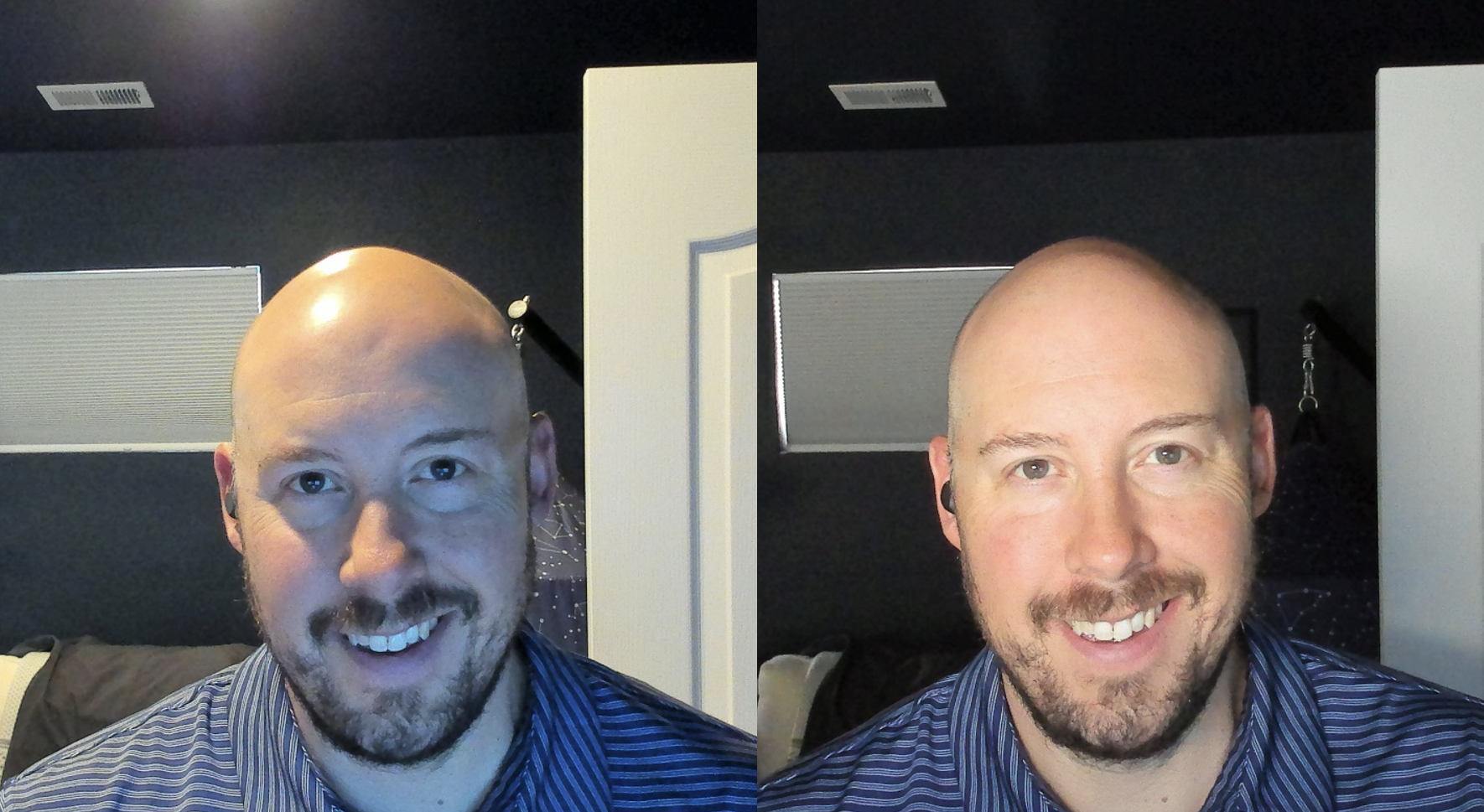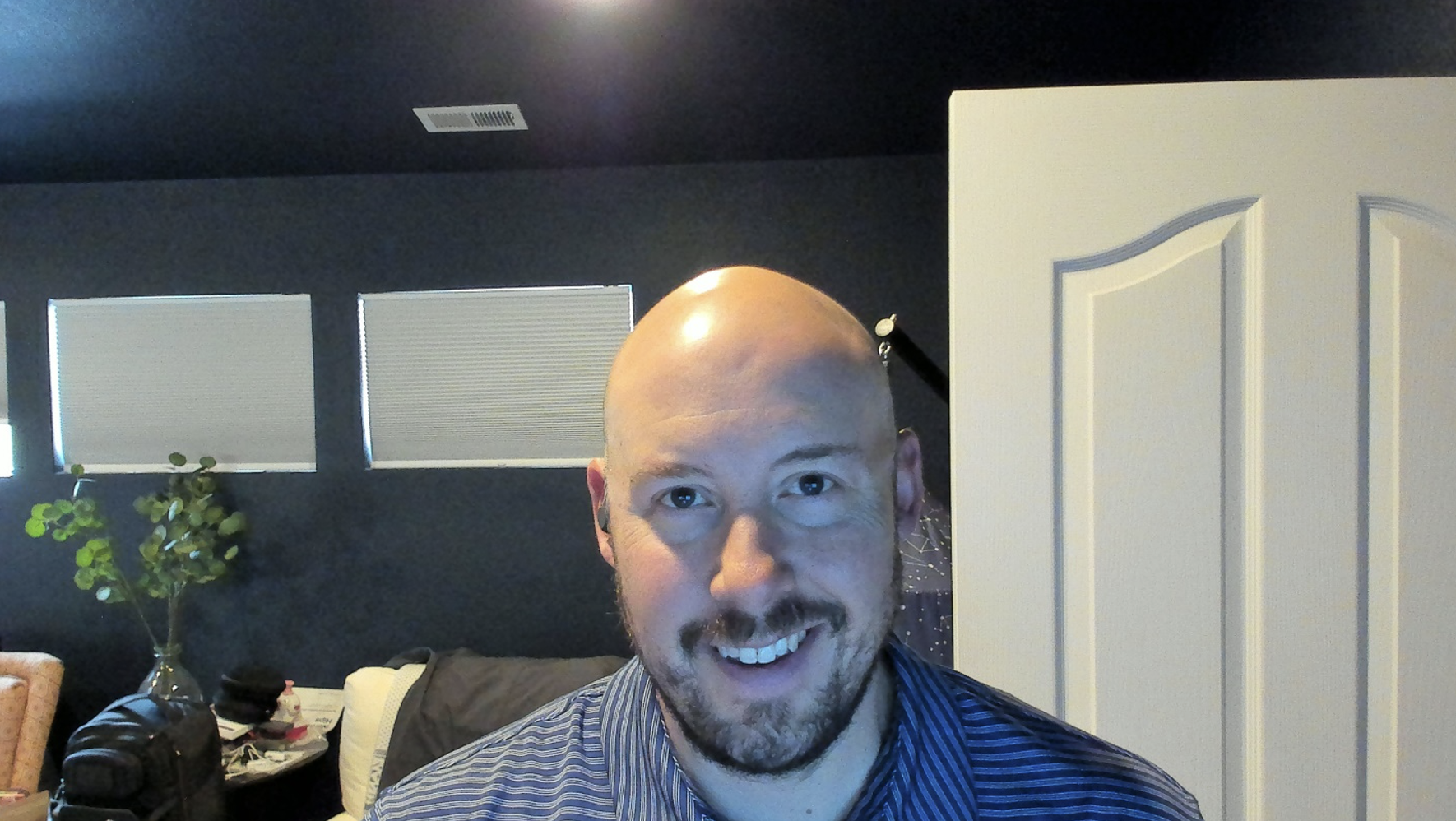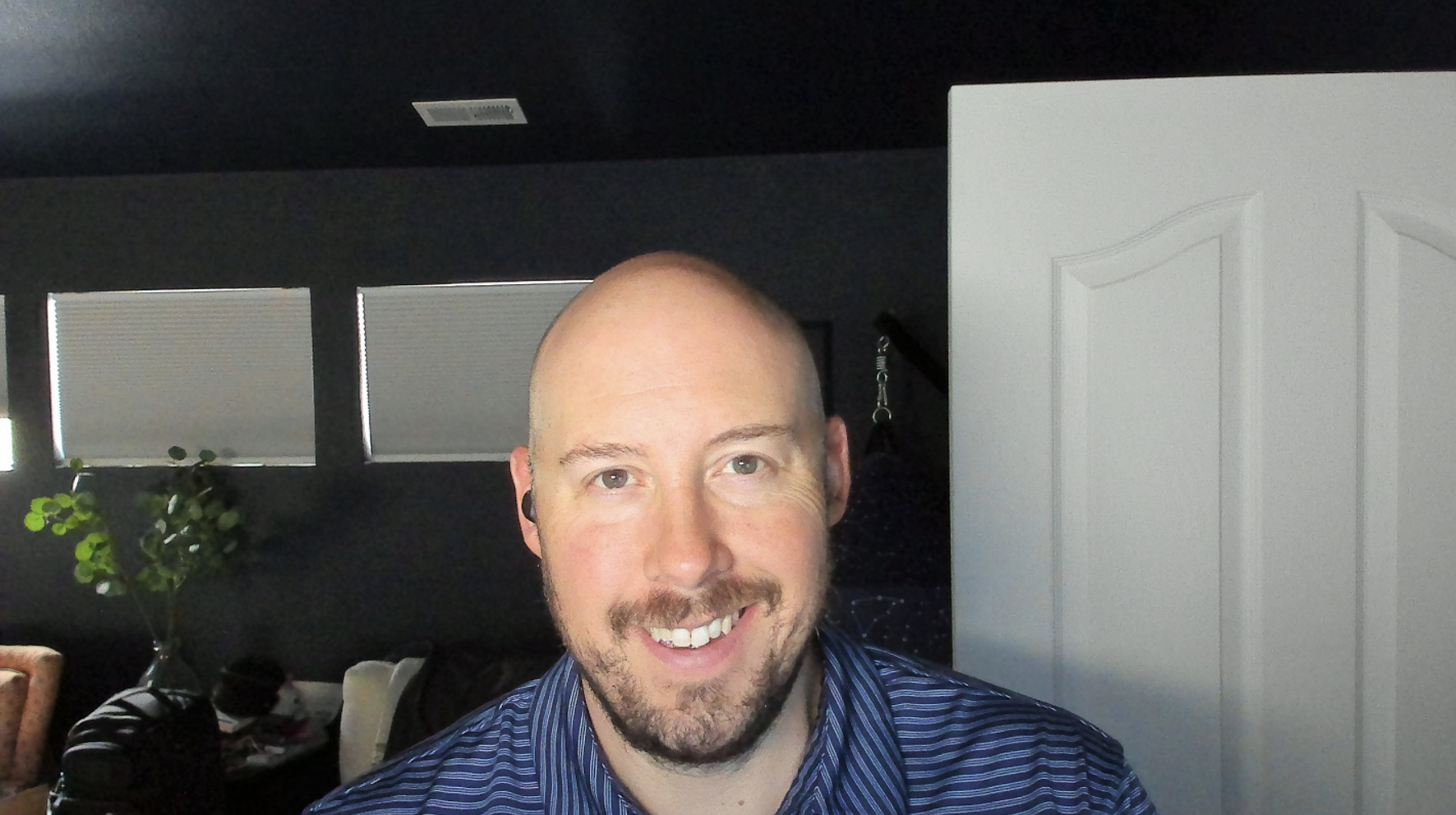How to Achieve Studio-Quality Lighting in your Home Office
Stop the madness! There is no excuse for having poor lighting during a video conference in your home office. Here's how to achieve studio-quality lighting.

Lighting is one of the most important details, yet often the last to come to mind when setting up a home office. Correctly done, natural illumination transforms the workability of a space and the on-screen appearance of a person. Inadequate lighting can lead to eye strain, stress, lack of visibility of presented materials, and lack of confidence in one’s appearance. To maintain equality amongst video participants, all subjects on a conference call should be well-lit, preferably with matching systems.
You Can Create an Equitable Meeting Experience
The best way to produce equitable meetings is to foster the illusion that we’re sitting next to one another. Just a little knowledge goes a long way when it comes to improving the video image with a properly balanced camera and lighting. If we look more vibrant, not only will we feel more vibrant, but we’ll appear more natural to other video callers. High-color rendering LED lighting is the best source to enhance both the accuracy of color and its saturation.
IT organizations supply employees with cameras, monitors, keyboards, mice, and a docking station, but no lights. If lighting is provided, the quality of the light and how the light and camera will work together is rarely considered. And there is no instruction on how and when to use it. The lighting/camera integration is paramount to achieving a professional on-screen image. Following simple level and color temperature adjustment and white balancing steps can make everyone wonder what you did to look positively cinematic on-screen.
The Simple Science of Lighting
Color Rendering Index (CRI) measures the ability of a light source to correctly reveal objects’ colors, measured by comparison with a natural light source rated at 100 percent. Color temperature measures the color of light, existing on a scale between a lit match (1700 Kelvin) and a skylight (10,000 K). Color temperature conveys a feeling or mood and serves as a distinct tone that delivers information like what time of day it is. Lights that have a high CRI mimic the appearance of natural daylight, causing us to look more ‘life-like’ on screen. Light sources with a high CRI are best when you want to ensure that key human elements, such as skin tone and hair color are accurately reproduced. When a video call involves reviewing products, like clothing or furniture, color rendering is vital, and in applications like telemedicine, accurate color reproduction is critical
Along with a high CRI video light, white balancing the camera image optimizes the video result. White balancing sets the reference for the camera based on how the eye perceives white, creating a reference point for all other colors. If you have ever been on the opposite side of a call with somebody with a white wall behind them, you can quickly see how off their complexion is. A white background makes it difficult for your camera to auto-adjust correctly. To remediate this, you should spend a little time manually adjusting the camera’s white balance. Ideally, a background wall that’s not white and not blank will help your camera auto-white balance correctly.
Cameras may be set to automatic or manual white balance. When time allows, manual white balance may provide a more nuanced result. As we white balance a camera, we instruct it to compensate with available light, so it renders an object white. The better the light provided to the camera, the less compensation it needs to do, saving that energy for video quality.
Feeling “near” can be especially compelling for telemedicine applications where color accuracy is vital to communicate and help diagnose patients. It is equally important for their patients to see their provider in good lighting to help relieve any anxiety and concerns they may have.
A daily selection of features, industry news, and analysis for AV/IT professionals. Sign up below.


The Lighting
ZELo offers several convenient and easy ways to adjust the lighting. You can use the simple touch sliders on the base of the device. The ZELo app is available on iPhone or Android. With its built-in Alexa and Google Assistant, you can tell your light, “Hey Google, turn ZELo on. Make ZELo 3200 degrees Kelvin.” Or “Alexa, make ZELo warmer. Make ZELo brighter.”
ZELo can even be programmed to cycle through adjustments designed to combat Seasonal Affective Disorder (SAD). So, if you are in the northern hemisphere, not only will you look better, but you can increase productivity and happiness too.
A typical setup with a laptop connected to a Logitech Dock, and webcam, and standard streaming light atop the monitor provides flat lighting. Facial contours are easily lost. By replacing that streaming light with a ZELo, the subject is separated from the wall and looks vibrant on screen.
In most spaces, a ZELo should be positioned horizontally and parallel to the top of the monitor, above the camera. You can also place a ZELo on each side of the screen, running vertically at a 45-degree angle to give a film-quality image.
All spaces are different, a kitchen has different requirements than a bedroom, garage, or she-shed. Windows could be to one side or behind you. Natural light may require adjusting ZELo to a higher, and therefore bluer, color temperature to balance against the sunlight. There could also be a floor lamp. Each of these set-ups requires slightly different lighting parameters to render maximum video results. Blinds are an easy solution to limit light from windows, with black-out blinds being the ultimate option. Whenever possible, turn off overhead lights. Adding effects lighting, like accents on paintings, plants, or art, will add depth to an image.
As the workforce and professional services, like concierge video medical care, continue to evolve towards remote realities, small investments in high-end camera and lighting systems will make large impacts on their collaborative effectiveness. And as the remote workforce grows, presenting your team with a superior and consistent video image translates to market advantage, and is fundamental to credibility for companies in the communication and collaboration sphere.
This article was contributed by Kathy Katz, co-founder of Brightline, and Adam Berns, senior technical Alliances Manager at Logitech.
Kathy Katz has been managing partner of Brightline since 1998. During her tenure, she’s been awarded two patents and led Brightline’s first PoE projects for DoorDash, Maricopa County, and Slack. She has traveled the globe bringing Brightline fixtures to the Sydney Olympics in 2000 and leading large-scale projects for Jupiter Shop Channel in Tokyo, KPMG in Australia, and BC Hydro in Canada. She managed Brightline lighting design and installation projects for Google, Facebook, Uber, Mcafee, Zoom, and dozens of city council chambers. Kathy has lectured on lighting all over the world.

